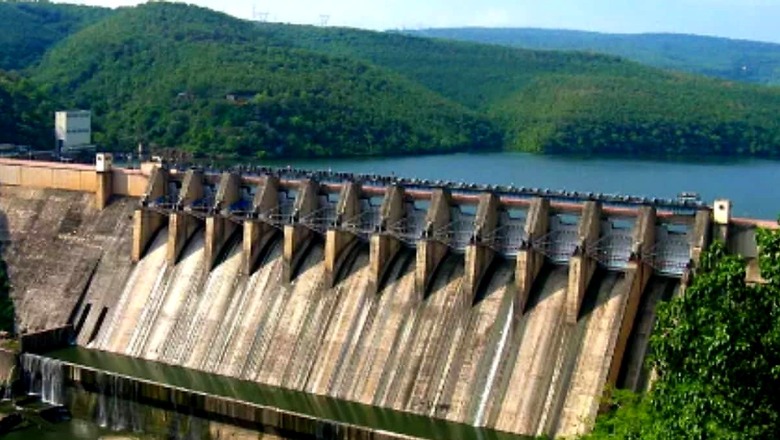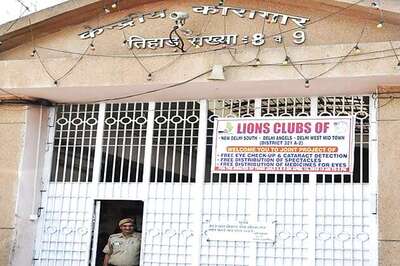
views
As India takes the global lead in terms of effecting climate action and fulfilling its commitments vis-à-vis the Paris Agreement, a Northeastern state bordering Tibet is set to become a hub of hydropower generation.
India is working towards bolstering its clean energy capabilities by proposing the establishment of 13 hydroelectric projects in Arunachal Pradesh, with the aim of contributing 13,000 megawatts (MW) to the national grid. The Arunachal Pradesh government last week signed MoUs with central public sector undertakings to construct 13 hydropower projects.
According to Union Power Minister RK Singh, these ventures would require an investment of Rs 1.4 lakh crore and lead to a substantial elevation in the per capita income of the region.
“These projects will bring in investment of around Rs. 1.4 lakh crores to Arunachal Pradesh, resulting in a quadrupling of per capita income. And the nation will get clean power. Similarly, five hydel projects are under construction in Jammu & Kashmir; hence, our hydro potential in J&K too is moving ahead and a lot of investment is coming in,” a statement from the Power Minister said.
The Centre’s goal is clear. It wants to increase the share of hydropower in India’s renewable energy basket. The Power Minister also spoke of efforts being taken to better tap into the available hydropower capacity of the country.
“Today, our hydropower capacity is 47,000 MW, which is 35% of our available hydropower potential. Developed countries however have utilized around 70% – 80% of their available hydro potential,” the statement added.
Major Projects Underway in Arunachal
Arunachal Pradesh is currently witnessing the construction Subansiri Lower Hydroelectric Project (SLHEP), which is the biggest hydroelectric project undertaken in India so far. The estimated annual energy generation from the project is 7421.59 MU. The installed capacity of the project is 2,000 million watts (MW).
Importantly, the SLHEP project is a run-of-river dam, which means the flow of water in the river downstream of the dam is the same as the flow of water upstream of the dam. This is considered one of the more environmentally compatible models of harnessing hydropower, given that it does not disproportionately impact the flow of a river.
The Centre is anticipating a doubling of India’s power demand by 2030, and the signs of the same are visible already. There has been a 20 per cent surge in the nation’s power demand in the latter part of 2023. This necessitates India to take up capacity addition in the renewable energy front aggressively, since apart from meeting the growing power demand, it also needs to stick to its climate commitments.
Another important project that is in the works in Arunachal Pradesh is the ambitious Dibang project. The multi-purpose hydropower project in Arunachal Pradesh is finally on track, with NHPC Ltd having set a deadline of this month to award tenders for all its major works. Scheduled for commissioning in 2032, the Dibang project will be the biggest hydropower project in India once ready. It will also have the tallest dam in India with a height of about 288 metres.
Tapping Potential in the Northeast
The Narendra Modi government has made it a point to tap into the Northeast’s potential to become a hydropower hub for India. While North India has 19,696.3 MW installed hydropower capacity, the highest among all regions, the South has 9,741.6 MW in operation. The Western region has an installed capacity of 5,552 MW, while the East has 5,087.8 MW.
The Northeastern region has an installed hydropower capacity 2,027 MW. However, that situation is set to change dramatically as projects with an installed capacity of 5,000 MW are being built in the region, which will propel Northeast’s rise as the region with the second-highest hydro capacity in the country.
The total hydropower generation potential of India’s North-Eastern states including Bhutan, is about 58,000 MW, of which, Arunachal Pradesh alone accounts for 50,328 MW – the highest in India.
India’s Hydropower Sector
Currently, hydropower contributes about 11 percent to India’s energy mix, as per the Central Electricity Authority (CEA). In fact, CEA estimates that India has 145 GW of Hydroelectric potential, of which just 29 per cent has been tapped into.
Hydropower, unlike coal-fired power plants, is considered a flexible generator since these units can be ramped up and down quickly to suit the power demand at a particular point of time.
At present, about 10.2 MW of hydropower is under construction. According to the Central Electricity Authority, by 2032, India will have 62.2 GW of hydropower installed by 2032, with up to 65.7 GW in a “high hydro” case.
Additionally, India has already achieved small hydro (SHP) capacity of 4.9 GW has already been achieved through 1167 small hydropower projects.
Chasing Climate Action Goals
While it is true that the Northeast region is finally getting the attention it needs to facilitate a rapid harnessing of its hydropower potential, states in other parts of the country are not mute spectators either.
Uttar Pradesh for example, in August this year, was planning to set up three hydropower projects totalling 3,250 megawatts (MW). These three plants will necessitate the acquisition or utilisation of more than 1,000 hectares of land in the districts of Sonbhadra, Chandauli, and Mirzapur.
The projects will see an investment of nearly Rs 15,000 crore and are expected to create about 10,000 new job opportunities. Speaking about Uttar Pradesh, the state has set a goal to generate 22,000 MW of renewable energy over the next five years.
In the current financial year (2023-24), government data reviewed by Moneycontrol earlier this year had revealed that at least seven hydropower projects with a total capacity of 3,110 megawatts (MW) were set to be commissioned.
The Modi government has also taken a series of measures to make hydropower a part of India’s renewable energy transition. Under the hydro policy, the Centre has providing renewable energy status for large hydel projects, apart from new funding provisions.
Earlier, hydro projects up to 25 MW capacity were considered as renewables and were eligible for various incentives. Now, hydro projects above 25 MW can also avail such benefits.
Apart from ensuring energy security through renewables, India is looking at increasing its hydropower capacity in the Northeast region to demonstrate its willingness to take on an increasingly aggressive China, that has been dropping hints that it could weaponise the flow of water from Tibet into India. In order to do so, the Communist-ruled country has built a series of dams on the stretches of Brahmaputra, called Yarlung Tsangpo in Tibet. For India, the Brahmaputra is a vital water resource. According to the government, it can alone meet 40 percent of India’s hydropower potential.
As India moves forward with its goal of increasing the share of renewable energy in the country’s power basket, the environment must be taken care of. Hydropower is a touchy subject for some. When it comes to hydropower, environmental concerns prove to be a particularly big hurdle in multiple projects. The government must come up with innovative solutions to ensure that India’s expansion of its hydropower capacity does not adversely impact the ecology.




















Comments
0 comment